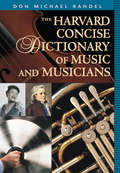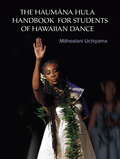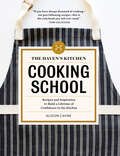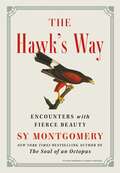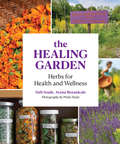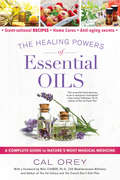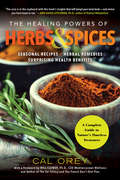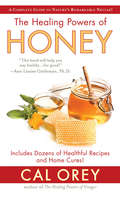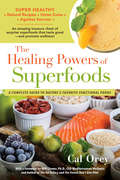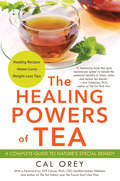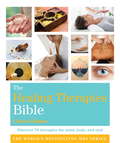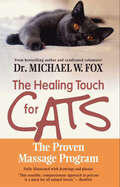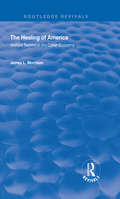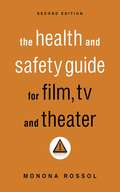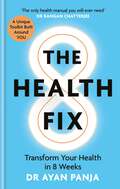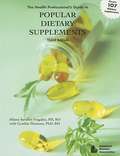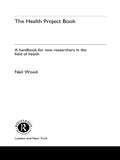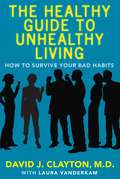- Table View
- List View
The Happy Home: The Ultimate Guide to Creating a Home that Brings You Joy
by Chelsea FoyThis lovely and inspirational guide, organized around six joyful qualities, will show you how to create a happier home, through prompts, quick fixes, afternoon projects, and mindful design and organization—The Happy Home is not just a title, it&’s a promise.Energize. Uplift. Comfort. Calm. Empower. Express. The road to happiness is paved with good emotions. In fact, a happy home is infused with these six actions and this cheerful book will help you create a space you love and that loves you back. Lovely Indeed creator Chelsea Foy offers up more than 50 creative ideas to engage all the senses to brighten your mood throughout your home. This book sits at the intersection of HGTV home improvements and design, thoughtful Marie Kondo practices, and a cheery color palette fans of the Home Edit will love.Kicking off with a foreword by Joy Cho, creator of Oh Joy!, the book guides you through questions to consider so you can customize your home to your own mood-lifting needs, be it a calming bedroom, a chill den, or an energizing kitchen. Easy projects and ideas help you tweak the rooms of your house so they engage the senses in all the right ways.Each chapter focuses on a feeling and includes: Guided prompts: Questions to consider about what a happy space might look and feel like for youQuick Tricks: Creative hacks and ideas to freshen up your spaceAfternoon Projects: Doable projects and inspo for your home and décor to amp up the joy Big Ideas: Step-by-step projects that you can complete in a day or weekend that are inexpensive but go a long way to creating a home tailored to your tastes and happiness needs With this handy and cheery book, you'll quickly find ways to customize all the rooms in your house for maximum bliss.
The Harney & Sons Guide to Tea
by Michael HarneyRead Michael Harney's posts on the Penguin Blog. The country's leading connoisseur presents a comprehensive guide for developing your tea palate. The Harney & Sons Guide to Tea transforms tea drinkers into tea experts. Written by one of the country's leading tea professionals, The Harney & Sons Guide to Tea is an illuminating resource for tea drinkers interested in developing and refining their palate as well as their understanding of the complex agricultural, historical, and cultural significance of tea. Drawing on his singular experience, Michael Harney masterly explores the full range of teas, revealing how each tea is distinctive, with a taste that derives from a precise combination of cultivation and production techniques, and influenced by the geography as well as its history. These lively profiles of diverse tea varieties--from delicate white tea to aged black puerh tea--include brewing instructions and vivid descriptions of the beverage scent, taste, and appearance; everything you need to become a connoisseur. Tea has long been popular in the United States, but only recently have Americans treated this nuanced beverage with a deeper curiosity, more refined approach, and wider appetite. The Wall Street Journal reports that total U.S. tea sales are nearly four times what they were in 1990, and this growing population of discriminate consumers will celebrate the new vocabulary provided in The Harney & Sons Guide to Tea. Unique in scope, candor, and accessibility, The Harney & Sons Guide to Tea will quickly become the classic reference and staple in the library of every serious tea drinker.
The Harper Book of American Quotations
by Gorton Carruth Eugene EhrlichMore than 8000 quotations grouped into 264 alphabetical categories where they are listed alphabetically by author. Valuable index includes authors and their quotations, the topic of quotations and familiar or key words. Very enjoyable and comprehensive.
The Harvard Concise Dictionary of Music and Musicians (Economics And Business Victorian Curriculum Ser. #17)
by Don Michael RandelThis new compact guide to the history and performance of music is both authoritative and a pleasure to use. With entries drawn and condensed from the widely acclaimed Harvard Dictionary of Music (now in its fourth edition) and its companion The Harvard Biographical Dictionary of Music, it is a dependable reference for home and classroom and for professional and amateur musicians. This concise dictionary offers definitions of musical terms; succinct characterizations of the various forms of musical composition; entries that identify individual operas, oratorios, symphonic poems, and other works; illustrated descriptions of instruments; and capsule summaries of the lives and careers of composers, performers, and theorists. Like its distinguished parent volumes, The Harvard Concise Dictionary of Music and Musicians provides information on all periods in music history, with particularly comprehensive coverage of the twentieth century. Clearly written and based on vast expertise, The Harvard Concise Dictionary of Music and Musicians is an invaluable handbook for everyone who cares about music.
The Harvard Dictionary of Music: Fourth Edition (Harvard University Press Reference Library #10)
by Don Michael RandelThis classic reference work, the best one-volume music dictionary available, has been brought completely up to date in this new edition. Combining authoritative scholarship and lucid, lively prose, the Fourth Edition of The Harvard Dictionary of Music is the essential guide for musicians, students, and everyone who appreciates music.
The Haumana Hula Handbook for Students of Hawaiian Dance: A Manual for the Student of Hawaiian Dance
by Mahealani Uchiyama Naomi Leina'Ala KalamaA great resource for students of traditional Hawaiian dance, this beautiful handbook filled with archival photographs covers the origins, language, etiquette, ceremonies, and the spiritual culture of Hula. Hula, the indigenous dance of Hawai'i, preserves significant aspects of Native Hawaiian culture with strong ties to health and spirituality. Kumu Hula, persons who are culturally recognized Hula experts and educators, maintain and share this cultural tradition, conveying Hawaiian history and spiritual beliefs in this unique form of cultural and creative expression, comprising specific controlled rhythmic movements that enhance the meaning and poetry of the accompanying songs.Emphasizing the importance of cultural literacy, the Handbook begins with an overview of the origins of Hula, its history in Hawai'i, and the primacy of the spiritual focus of the dance. The book goes on to introduce halau etiquette and practices, and explains the format of a traditional Hula presentation, together with the genres of Hula and the regalia worn by the dancers. Practical components include sections on Hawaiian language and chant and a glossary of Hula commands and footwork.Author Mahealani Uchiyama trained in Hawaii in the Hula lineage of Joseph Kamoha'i Kaha'ulelio and is currently the Kumu Hula at the Halau Ku Ua Tuahine in Berkeley, California. As the founder and artistic director of the Center for International Dance and board member of Dance Arts West, the producers of San Francisco's annual Ethnic Dance Festival, Uchiyama's approach to Hula is deeply holistic and reflects her background in indigenous wisdom traditions and cultural exchange and interaction.From the Trade Paperback edition.
The Haven's Kitchen Cooking School: Recipes and Inspiration to Build a Lifetime of Confidence in the Kitchen
by Alison CayneNamed a Best Cookbook / Gift Book of the Year by Better Homes & Gardens, Library Journal, and Publishers Weekly The Must-Have Book That Will Teach You How to Cook Learning to cook has never been simpler—or more delicious—thanks to The Haven’s Kitchen Cooking School. Each of the book’s nine chapters centers on a key lesson: in the eggs chapter, readers will learn about timing and temperature while poaching, frying, and scrambling; in the soups chapter, they will learn to layer flavors through recipes like Green Curry with Chicken. The rigorously tested recipes—including wholesome lunches, dinner-party showstoppers, and delectable desserts—will become part of readers’ daily repertoires. Beautiful photographs show both the finished dishes and the how-to techniques, and helpful illustrations offer further guidance.
The Hawk's Way: Encounters with Fierce Beauty
by Sy MontgomeryA splendid and luminous celebration of one of nature&’s most perfect and mysterious creatures—the hawk—from the New York Times bestselling author of the &“astoundingly beautiful&” (NPR) The Soul of an Octopus. When Sy Montgomery went to spend a day at falconer Nancy Cowan&’s farm, home to a dozen magnificent birds of prey, it was the start of a deep love affair. Nancy allowed her to work with Jazz, a feisty, four-year-old, female Harris&’s hawk with a wingspan of more than four feet. Not a pet, Jazz was a fierce predator with talons that could pierce skin and bone and yet, she was willing to work with a human to hunt. From the first moment Jazz swept down from a tree and landed on Sy&’s leather gloved fist, Sy fell under the hawk&’s magnetic spell. Over the next few years, Sy spent more time with these magnificent creatures, getting to know their extraordinary abilities and instincts. They are deeply emotional animals, quick to show anger and frustration, and can hold a grudge for years. But they are also loyal and intensely aware of their surroundings. In this mesmerizing account, featuring sixteen pages of gorgeous color photographs, Sy passionately and vividly reveals the wonderous world of hawks and what they can teach us about nature, life, and love.
The Hayford Bible Handbook
by Jack W. HayfordThe Hayford Bible Handbook continues to offer charismatic and Pentecostal Christians a major reference tool that provides easy access to a wealth of biblical and practical information.Are you a Spirit-filled Christian who longs for fresh insights from the Bible? Do you want God's truth to challenge you, and change you, and bless others through you in ways you never thought possible?The Hayford Bible Handbook is an unparalleled resource that unveils the Keys to Scripture uniquely, providing not only a wealth of information, but also a spiritual stimulus that will encourage your faith and service to Christ.FeaturesKingdom Keys to opening up Spirit-filled life emphases in each Bible bookAn informative Survey section for each book of the BibleHundreds of Kingdom Life Insights™, offering Spirit-filled life perspectives on individual versesA Truth-in-Action chart for each Bible book, highlighting practical principles and specific actions that might grow out of themThe unique Spirit-Filled Life® Encyclopedic Dictionary with over 1300 entries, including word studies and Kingdom Dynamics articlesVisual Survey of the Bible
The Healing Garden: Herbal Plants for Health and Wellness
by Deb SouleIn The Healing Garden, Deb Soule, founder of Avena Botanicals, offers an inspiring guide to herb gardening and crafting herbal remedies that promote wellness of spirit and body. Soule combines her passion for plants gardens, and healing with her extensive experience working with medicinal herbs, flowers, roots, and berries. Her practical advice addresses each aspect of fostering a garden filled with helpful, healing plants: biodynamic gardening practices; gathering plants and setting up a drying room; and creating herbal teas, decoctions, tinctures, syrups, tonics, vinegars, essences, and more. A chapter outlining eighteen medicinal herbs provides detailed information on their cultivation and healing properties. Molly Haley's colorful photography showcases Avena Botanicals' lush herb gardens in all seasons. The Healing Garden is grounded in respect for the interconnectedness of all living beings and is an eloquent plea for spiritual awareness and the wholeness of individuals, communities, and our planet.
The Healing Powers of Essential Oils: A Complete Guide to Nature's Most Magical Medicine (Healing Powers #8)
by Cal OreyFollow your nose to nature’s pharmacy: the garden, where the essence of flowers, fruits, and trees provide some of our most powerful—and pleasurable—sources of health and healing… Essential oils—including peppermint, eucalyptus, rose, and tea tree—are nature’s ancient medicine, abundant with therapeutic effects. The latest scientific research shows that many popular essential oils and aromatherapy can boost your health and well-being, adding years to your life! This fascinating guide gives you the down-to-earth scoop on the top twenty oils—all of which are budget-friendly and available year-round in everyday products at your grocery store, health food store, and online. Learn how nature’s bouquet can help you: *Fight colds and stomach woes with medicinal eucalyptus and mint; slow the aging process and lower your risk of cancer, heart disease, and depression with relaxing chamomile and lavender. *Naturally enhance flavor in dishes for every season with sweet-smelling foods like Cinnamon Rolls and Gingerbread Squares that lift your mood and trigger fond memories. *Discover dozens of home remedies to ease anxiety and stress, improve sleep, sharpen brainpower, increase energy, heal skin problems, and more! *Enjoy over 50 recipes for delicious dishes from salads, soups and entrees to desserts, including Lemon Oil Raspberry Muffins and Roast Chicken with Orange and Rosemary. Sprinkled with feel-good stories and memorable legends, The Healing Powers of Essential Oils shows you how the comfort and calm of scent can help you get healthy and stay healthy, while taking you on an exciting and life-changing aromatic adventure! Includes color photos
The Healing Powers of Herbs and Spices: A Complete Guide to Nature's Timeless Treasures (Healing Powers #9)
by Cal OreyThe key to vibrant health for all generations is in your kitchen . . . Anise, bay leaf, garlic, parsley, turmeric, and more—for thousands of years, herbs and spices have been praised for preserving and flavoring food, as well as preventing and curing illnesses. The latest research reveals that the seasonings already in your pantry—or easily found fresh in your supermarket or garden—can lower your risk for cancer, heart disease, and obesity. This A-to-Z guide catalogues the most popular and versatile herbs and spices, drawn from the Mediterranean Diet but suitable for any diet plan. You will learn how to harness herbalism to heal your body and mind. Discover how to use nature&’s gifts including allspice, chives, fennel, oregano, pepper, tarragon, saffron, and special blends like Herbes de Provence to: *Bring abundant zest to your table while lowering your cholesterol, balancing your blood sugar, and revving up your metabolism—at any age! *Ward off colds and flu, banish a hacking cough, and even ease PMS or menopause woes, by adding tasty plant therapy to your favorite food or drink. *Lessen your anxiety and boost your mood with aromatic natural ingredients found in dried and fresh flavorings. *Soothe aches and pains without harmful side effects—and trigger feel-good endorphins—using sweet and savory garnishes, including edible flowers. *Create in-home spa treatments using the same herbal potions featured at luxury spa resorts. Caraway Breadsticks, anyone? How about Cilantro Lime Slaw, Herbal Greek Bean Soup, or Roasted Paprika Cornish Hens? With over 50 taste-tempting recipes, along with personal stories and fascinating historical anecdotes on medicinal uses dating back to biblical times, The Healing Powers of Herbs and Spices is your go-to guide to embracing limitless energy and healthy longevity while feasting on memorable meals full of aroma and deliciousness! Includes 16 pages of color photos
The Healing Powers of Honey: The Healthy & Green Choice to Sweeten Packed with Immune-Boosting Antioxidants (Healing Powers #4)
by Cal OreyBoost your immune system with antioxidants, lower your risk for the flu, cancer, diabetes, heart disease, and more—with honey—the healthy sweetener that&’s also the green choice for today&’s fast-changing world! Drawing on the latest honey buzz and interviews with medical doctors, beekeepers, and researchers, this charming and enlightening book (sweetened with stories about honey bees and humans) reveals 30 healing honey varieties paired with cinnamon and teas, tells you how to incorporate honey into Mediterranean-style, heart-healthy recipes like Honey Custard French Toast, Honey-Glazed Game Hen, and Filo Pear and Honey Tarts, and provides more than 50 home cures that combat digestive woes to skin woes, while boosting immunity. You'll also enjoy Cleopatra's milk-and-honey beauty treatments and eco-friendly beeswax household uses--all made with the amazing honey bee's gifts! Did you know?... Known as Mother Nature's "nectar of the gods," honey was praised for its healing powers as far back as 5,000 years ago by Egyptians. Eating honey can help lower the risk of heart disease, cancer , diabetes—even help reduce body fat and unwanted weight!—and increase longevity and raise immunity. Pure, raw, unprocessed honey is a healthier sweetener than table sugar and high fructose corn syrup. It's chock-full of antioxidants, minerals, and vitamins—and only has 21 calories per teaspoon. Super "bee foods" (including nutrient-rich bee pollen, propolis, and royal jelly) are used and touted for their healing powers by beekeepers and medical experts in the present-day. Honey can relieve a variety of ailments, including allergies, coughs, fatigue, pain, and stress, as well as boost libido. The honey bee pollinates about one-third of the food we consume (including nutritious fruits and nuts). "A fascinating read about a natural remedy that is a rich source of antioxidants." —Ray Sahelian, M.D., author of Mind Boosters"This eye-opening book provides you with a delicious truth of the traditional Mediterranean diet: Honey is a sumptuous route to optimal health." —Dr. Will Clower, Ph.D., author of The French Don't Diet Plan
The Healing Powers of Superfoods: A Complete Guide to Nature's Favorite Functional Foods (Healing Powers #7)
by Cal OreyDid you know the keys to a long life and vibrant good health can be found on the shelves of your local supermarket? Apples, leafy greens, shellfish, yogurt—even ice cream and pasta. The latest scientific studies reveal that many of the classic foods you’ve always loved are superfoods that can supercharge your health! Not only are they delicious, they’re affordable—plus these essential farm-to-table favorites can work with any diet plan, from the balanced Mediterranean Diet to the hunter-gatherer Paleo plan. With over 50 recipes for both cooked and raw dishes, including smoothies and soups, a detox juice fast and a jump-start pounds-off diet, this down-to-earth guide will show you how to get healthy and stay healthy with body-friendly superfoods. *Boost your immune system with citrus and nutrient-dense berries, including fresh, frozen, and dried. *Enjoy the healthy fats in eggs and nuts, including nut butters, to fight inflammation, slow the aging process, and lower your risk of cancer, heart disease, and diabetes. *Trade white sugar for antioxidant-rich sweeteners like maple syrup, the newest superfood! *Create home remedies designed to ease anxiety, improve sleep, boost brainpower and enhance energy. *Keep your home spotless for kids and pets using eco-friendly superfood-rich formulas. *Pamper your mind and body with the same food-based treatments that health spas use, including ingredients like seeds and seaweed. Now you can indulge in a Pesto Pizza or Berry Basil Smoothie, a Chicken Bone Broth or dark chocolate gelato, while chilling with an ancient-oats facial or relaxing in a warm, herb-scented bath. Infused with heartwarming stories and inspiring legends, The Healing Powers of Superfoods will take you to a world of wellness that starts at home with our favorite foods from Mother Nature—enjoyed in a new way with an exciting twist!
The Healing Powers of Tea (Healing Powers)
by Cal OreyWellness in a Cup—Discover the Benefits of Tea for Your Body and Mind! It picks you up and calms you down, warms you and refreshes you. With black, white, red, green, and herbal varieties, there’s a tea for every taste, and now this time-honored superfood is trending as the drink of choice for health-conscious people of all ages and cultures. This fascinating book boils down the rich history of tea—as well as the ever-expanding list of health and weight loss benefits found in its leaves. *Discover how black and white teas are heating up the beverage world with antioxidants and nutrients that lower the risk of heart disease, stroke, cancer, and fight off inflammation, viruses, and bacteria. *Learn how age-defying spa treatments made from tea can soothe your skin, soften your hair, and give you an all-over glow and peace of mind. *Get the latest knowledge from top medical researchers and tea experts on how the superfood can tackle digestive problems, depression and anxiety, aches and pains, and add years to your life. *Stir up over 50 home cures to give yourself more energy, less stress, treat the common cold, insomnia, and more! *Enjoy comforting and tea-licious recipes like Warm Scones with Jam and Devonshire Cream, Assorted Finger Sandwiches, Scrumptious White Tea Scallops, and Russian Tea Cookies paired with the perfect brew – hot or iced. Better health is just a sip away. With The Healing Powers of Tea (sweetened with lively stories) you’ll learn the hottest tips to improve your health, boost your brain power, and even clean your house!
The Healing Therapies Bible: Godsfield Bibles
by Claire GillmanThe Healing Therapies Bible profiles more than 50 therapies, explaining the principles on which they are based, their history in practice, and wherever possible, shows them in action.New healing techniques are now being taught all over the world. Some are associated with a particular healer, such as Brandon Bays' The Journey and Vianna Stibal's Theta Healing. Others respond to our spiritual ascension, such as crystal healing with new-generation, high-vibration crystals and flower remedies. Some have longer histories, and have evolved from a wealth of traditions - such as Mindfulness meditation, with its roots in Buddhism and western stress reduction techniques, and regression therapy, more recently popularized by Harvard Psychiatry Professor Dr Brian Weiss. Also included are the classic techniques of complementary therapists, such as massage, reiki, reflexology and aromatherapy.
The Healing Therapies Bible: Godsfield Bibles (Godsfield Bibles Ser.)
by Claire GillmanThe Healing Therapies Bible profiles more than 50 therapies, explaining the principles on which they are based, their history in practice, and wherever possible, shows them in action.New healing techniques are now being taught all over the world. Some are associated with a particular healer, such as Brandon Bays' The Journey and Vianna Stibal's Theta Healing. Others respond to our spiritual ascension, such as crystal healing with new-generation, high-vibration crystals and flower remedies. Some have longer histories, and have evolved from a wealth of traditions - such as Mindfulness meditation, with its roots in Buddhism and western stress reduction techniques, and regression therapy, more recently popularized by Harvard Psychiatry Professor Dr Brian Weiss. Also included are the classic techniques of complementary therapists, such as massage, reiki, reflexology and aromatherapy.
The Healing Touch for Cats: The Proven Massage Program
by Michael W. FoxThe landmark The Healing Touch: The Proven Massage Program, now updated and revised.Distinguished veterinarian and animal psychologist Dr. Michael W. Fox shares his pioneering 6-step massage technique through detailed illustrations, photos, and easy-to-read instructions, and provides information on how to understand your cat's anatomy, develop a massage routine, use massage to diagnose illness, and integrate it as part of overall care for your cat.This proven massage program for cats helps affirm the human-animal bond by providing instruction on why cats need massage, how to understand your cat's body language, how to give a diagnostic or therapeutic massage, and how to keep your cat healthy. 60 black & white drawings & photos, resources, index.
The Healing of America: Welfare Reform in the Cyber Economy (Routledge Revivals)
by James L. MorrisonFirst published in 1997, this volume responds to a world in the midst of a telecommunications revolution. What this means is that societies throughout the world are now provided with new opportunities to solve nagging problems. One problem which is the focus of this book is the continual pockets of poverty that exist in countries around the world. In this regard, welfare reform has been slow in coming as nations struggle for allocating limited resources for meeting the needs of all citizens within its boundaries. This book describes a welfare model that is quite innovative, imaginative, but also practical. It can be readily implemented in any country in the world, although the example used in this book is that of one country. The welfare reform model suggested here is all about freedom, opportunity and equity. At its conclusion, it challenges the reader to take welfare reform to the next level.
The Health & Safety Guide for Film, TV & Theater, Second Edition
by Monona RossolThis second edition has been expanded and updated to address new hazards, unique health and safety problems, and particular regulations that threaten anyone working in the entertainment industries today. Artists' advocate Monona Rossol exposes the hazards of theatrical paints, theatrical makeup, pigments, dyes, plastics, solvents, woodworking, welding, asbestos, fog, and offers practical solutions to these dangers. No one working in the performing arts can afford to skip this handbook packed with life-or-death health and safety information.
The Health Fix
by Dr Dr Ayan Panja'The only health manual you will ever need' - Dr Rangan ChatterjeeStarting with the experience of his own illness, Dr Ayan Panja, NHS GP and lifestyle medicine expert, brings a unique personalised framework to tailor targeted lifestyle-based interventions to you, with his groundbreaking new book THE HEALTH FIX. Unlike many approaches to health and wellbeing, THE HEALTH FIX focuses on the 'why' rather than just the 'what' with a toolkit:-Learn how to elegantly tighten up on the 8 factors which affect your health the most day to day-Improve your ability to control your habits-Understand the interplay between your symptoms and your biology-Experience the subtle power of "how, what and when"-Generate your own targeted lifestyle prescription -Apply the 'fixes' that are relevant only to you-Feel the difference within 8 weeksWith the rising tide of non-communicable disease such as long Covid, type 2 diabetes, cardiovascular disease, gastrointestinal conditions and increasing mental health need, Dr Ayan blends in the science and evidence into eye-opening case studies which demonstrate how the patient story lays everything out. The unique HEALTH FIX toolkit will help you change your health for good by understanding the story of you.
The Health Fix
by Dr Dr Ayan Panja'The only health manual you will ever need' - Dr Rangan ChatterjeeStarting with the experience of his own illness, Dr Ayan Panja, NHS GP and lifestyle medicine expert, brings a unique personalised framework to tailor targeted lifestyle-based interventions to you, with his groundbreaking new book THE HEALTH FIX. Unlike many approaches to health and wellbeing, THE HEALTH FIX focuses on the 'why' rather than just the 'what' with a toolkit:-Learn how to elegantly tighten up on the 8 factors which affect your health the most day to day-Improve your ability to control your habits-Understand the interplay between your symptoms and your biology-Experience the subtle power of "how, what and when"-Generate your own targeted lifestyle prescription -Apply the 'fixes' that are relevant only to you-Feel the difference within 8 weeksWith the rising tide of non-communicable disease such as long Covid, type 2 diabetes, cardiovascular disease, gastrointestinal conditions and increasing mental health need, Dr Ayan blends in the science and evidence into eye-opening case studies which demonstrate how the patient story lays everything out. The unique HEALTH FIX toolkit will help you change your health for good by understanding the story of you.
The Health Professional's Guide to Popular Dietary Supplements (Third Edition)
by Allison Sarubin-Fragakis Cynthia ThomsonTwenty-nine new dietary supplements have been added to this edition! This guide comprehensively explores the media claims, drug-supplement interactions, dosage information and relevant research for more than 100 of today's most popular dietary supplements. Completely revised, updated, and indexed information is provided for dietetics professionals and their clients. Written by industry experts, this guide's recommendations are reliable and backed by credible clinical research.
The Health Project Book: A Handbook for New Researchers in the Field
by Dr Neil Wood Neil WoodThe Health Project Book is a practical and detailed guide to all aspects of conducting a research project in health. It is relevant to anyone working in the health field who needs to design a study, collect the data, analyse the findings and write up a report. Clear advice and examples are given in each of these areas.Case studies illustrate the use of:* CD-Rom Facilities* the Cochrane database on the world wide web* qualitative analysis software.Individual chapters cover:* ethical considerations* the selection of samples* questionnaire design* working in a laboratory* conducting interviews* statistical and qualitative analysis.Further advice is included on how to write a research paper critically, and how to make effective verbal presentations of findings.Neil Wood has supervised student projects in health over many years and this handbook is based on his experience in teaching students how to get the best out of themselves and their project. It will be an extremely useful resource for students and professionals in nursing, health studies, health sciences, psychology and related fields.
The Healthy Guide to Unhealthy Living
by Laura Vanderkam David ClaytonSTRAIGHT TALK FROM A DOCTOR ON HOW TO MINIMIZE THE DAMAGE FROM THE UNHEALTHY LIFESTYLE CHOICES WE ALL KNOW WE SHOULDN'T MAKE -- BUT DO ANYWAY There are thousands of books out there on how to live a healthy life, but let's be honest: most of us don't want to live a healthy life -- we want to know how to live our unhealthy lives better. The Healthy Guide to Unhealthy Living is a straightforward and honest guide to maintaining the fast-paced lifestyle you're accustomed to, without giving up all the bad habits that come along with it. Whether you stayed up all night prepping for that early presentation or want to lose ten pounds fast for a high school reunion, whether you drank too much last night or wound up in an unfamiliar bed this morning, here's the practical advice you need for minimizing the damage and moving on with your life. A few of the issues addressed in this book include: Drinking and drugs: From easing the hangover pain to kicking a drug habit Sex: Pregnancy, STDs, and why you shouldn't believe everything you read on the Internet Pushing the limits: Sleepless nights, stress, and unavoidable life-related anxieties Everyday habits: Smoking, fast food, all-nighters, and the rest of those New Year's resolutions you haven't gotten around to yet Whether you indulge yourself in Vegas or your own backyard, when it comes to your health, it's easy to assume the worst. But even if you don't live a completely virtuous life, The Healthy Guide to Unhealthy Living says that if you make some smart choices, you can avoid major worries or embarrassment. While this book won't take the place of your own doctor, it will give you some shortcuts to healthier habits and better living -- like safer sex and better sex, or a healthier diet and a better body -- that might become habits you can live with.



